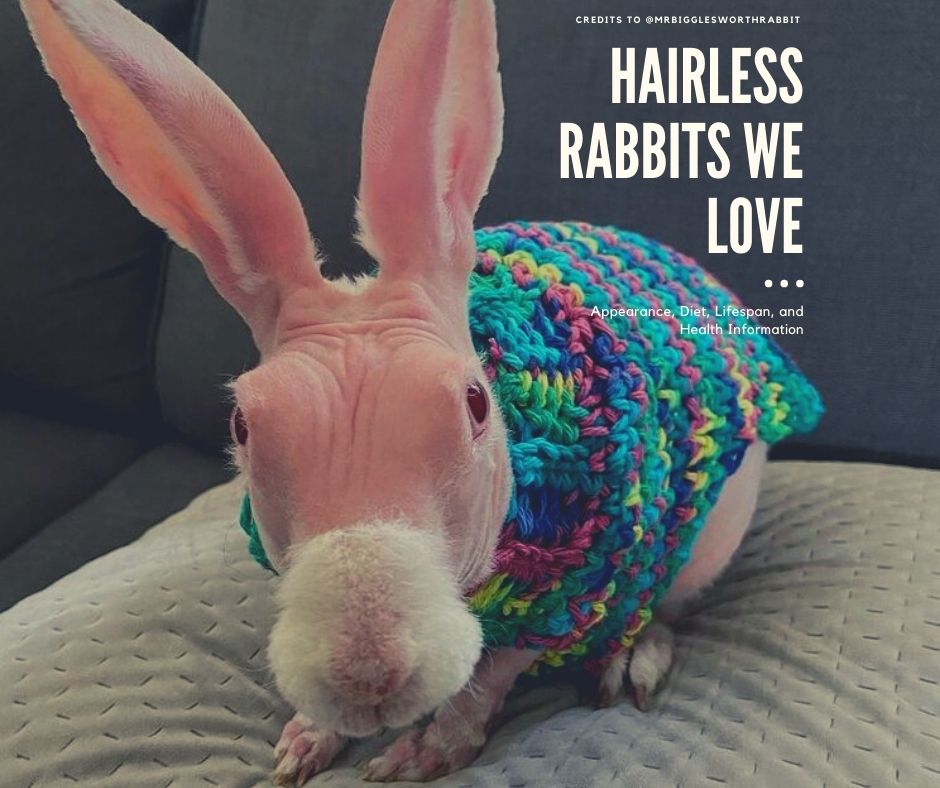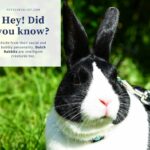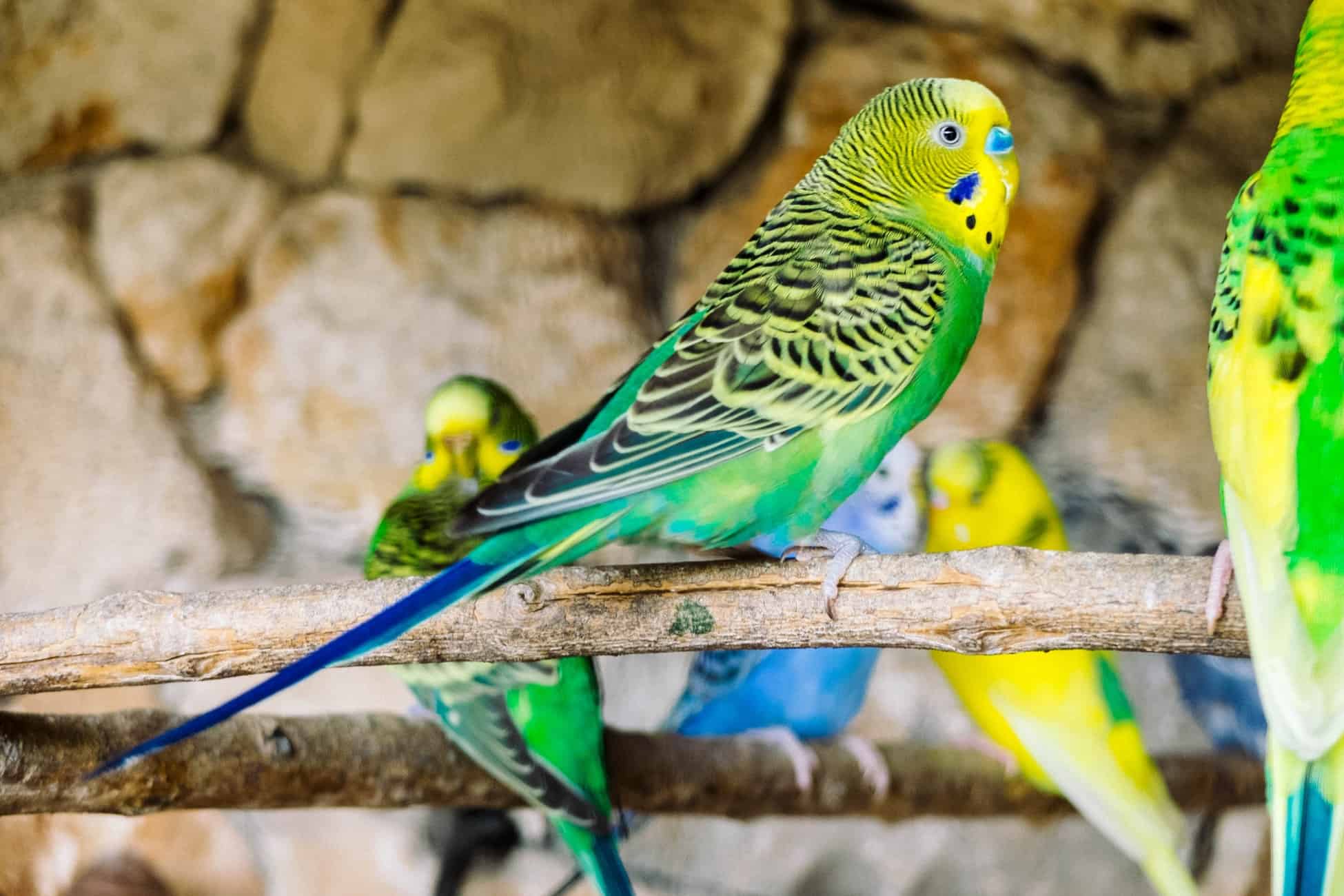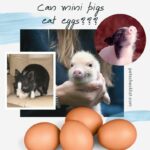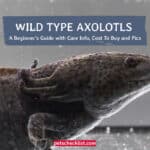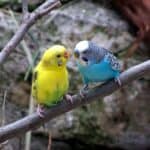Rabbits are known as one of the widely popular animals across the world. They belong to the Leporidae family in the order of Lagomorpha. There are 13 wild rabbit species to be exact, and each species have their distinct appearance.
We often see a white rabbit, but in the wilderness, there are other colors like brown, gray, albino, black, etc. They are extra special to everyone who handles them because of their soft and fluffy fur. But have you seen a hairless rabbit?
Table of Contents
Do Hairless Rabbits Exist?
Is there really a hairless rabbit? To directly answer this question, yes it does exist. In fact, there is a strong correlation that these bunnies acquired the condition of hairlessness through genetic mutation or from a physical or behavioral health problem.
When a rabbit is experiencing hair loss, it is called alopecia. It starts with small falling hair to hairless spots throughout the body, and they can end up bald. This situation brings discomfort to the rabbit because they feel itchy.
Though they are hairless, you must understand that they are all equally unique in their way. Before taking them home, you need to know more about them and the best care for this hairless rabbit.
Appearance
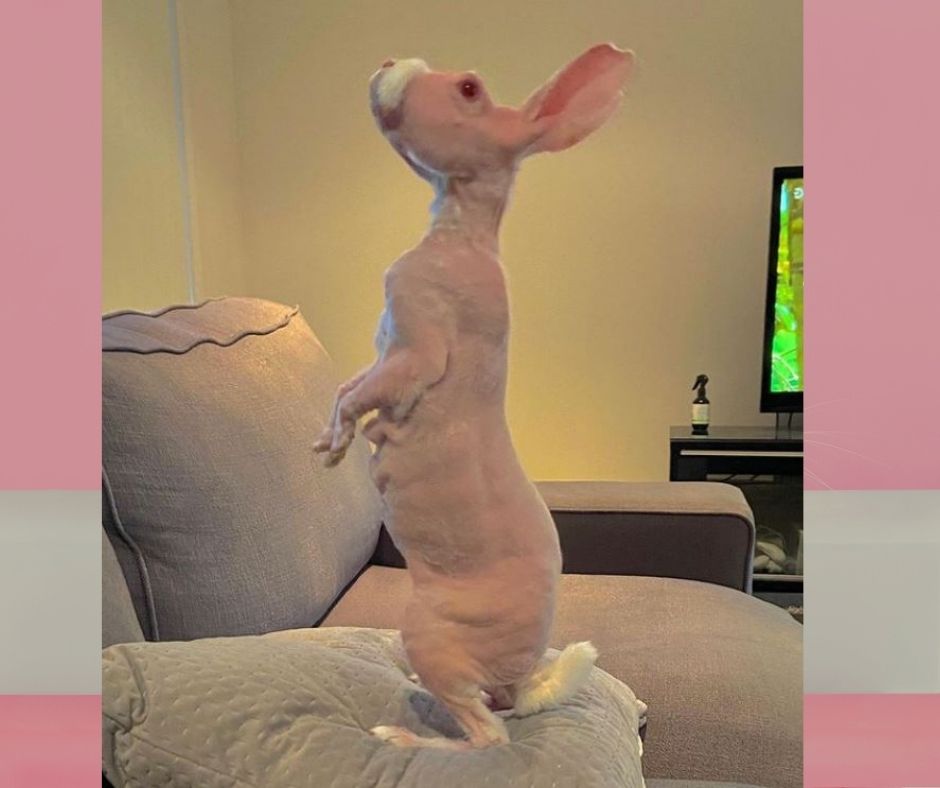
Although a hairless rabbit might not be as cute as the eastern bunny we usually see, there is no doubt that their facial hair is extraordinary as they create a bizarre appearance. These bunnies have a resemblance to a kangaroo.
Their overall appearance looks the same as normal rabbits; it’s just that 90% of their hair is completely gone. They have round black or red eyes, but their eyelids seem to be a little exposed. They have a crusty appearance on the skin, and open sores and inflammation are visible since they are hairless.
But when hairless rabbits feel cold, they are like humans too. Their skin is super soft but tends to go back to their flaky skin when the winter season is over. They usually have a bald patch on the forehead. As the hairless rabbit matures, the bald patch grows.
Lifespan
Although these bunnies lack hair, it does not mean that their life would be cut short. When you give them the proper care and nourishment, they will likely survive in their maximum lifespan.
Just like other pet animals, hairless rabbits need optimum care in every phase of their life. They are naturally born hairless but do not underestimate these bunnies. They may not look normal, but their capabilities are still functional.
In the wild, their average lifespan is around one to two years. Most of the time, when a hairless rabbit lives in the wild, they are always in danger because of exposure from disease and predators. A domesticated hairless rabbit can live between eight to twelve years. They tend to live longer in captivity set-up because they get enough care and a proper nutritional diet.
Causes Of Rabbits’ Hairlessness
Typically, we only see fluffy bunnies and they are indeed adorable and fun to watch. We assumed that they are healthy and nothing is wrong with them. But just like any other animals, they are prone to health problems too.
When your rabbit starts to lose its hair, it might be something to worry about, and as the owner, you should be curious to find out why they are experiencing such problems.
List of the common causes why a rabbit keeps on losing their hair.
- Parasite Infestation
- Bacterial Infection
- Dental Problems
- Urinary Tract Disorders
- False Pregnancy
1. Alopecia in Rabbits
A rabbit slowly losing its hair is called alopecia. This is primarily due to stress. Hair loss in rabbits is a common concern among rabbit owners.
Shedding is normal for these rabbits, but when you start to notice their skin getting flaky with dandruff, looking crusty in appearance, inflammation, and open sores are visible, that is a sign of abnormal fur loss.
‘Alopecia’ is the scientific word for hair loss. Alopecia can develop in patches or as thinning fur and is a symptom of many different conditions. Some causes of alopecia in rabbits are perfectly natural, but some are not, and require treatment
Source: PDSA UK
2. Parasite Infestation
This cause is common for hairless rabbits. Parasites invade certain parts of their body. Fur mites, burrowing mange mites, Mange mites, Ringworm fungus (Microsporum spp.), ear canker mites, and Tropical rat mites or feather mites are parasites that cause too much itchy that your rabbit might scratch off his fur.
3. Bacterial Infection
When your rabbit has a warm and humid ambiance, they are more prone to bacterial skin infections because their skin cannot stay dry. The fur tends to have a smelly odor, crumbly and exposed to flystrike. It can be a cause of their fur loss in the affected areas.
4. Dental Problems
Rabbits can be picky eaters. Some rabbits like pellets, and others will refuse to eat pellets. They only accept their favorite treats. The saliva burn or fur loss on the dewlap under the chin and on the chest might be the reason.
5. Urinary Tract Disorders
If you notice a fur loss is restricted to the area around the tail, between the hind legs, and on the feet up to the belly, your rabbit may have a urinary tract problem.
There might be an infection, bladder stones, and bladder sludge, and eventually, it can cause subsequent hair loss. Their skin can also become red and raw which makes them look like a newborn.
6. False Pregnancy
Rabbits show their nesting behavior by pulling out tufts from their chest and belly. They line their nest with the fur and other things they can see in households like pillows or couches.
If pregnancy is impossible for your rabbit, then it is probably a false pregnancy. Worst, it can lead to mammary cancer, uterine cancer, and other health issues regarding the reproductive system.
Average Cost
Before buying a rabbit, make sure that they are in their best health condition. You can get rabbits in a local pet store or rescue facility.
A rabbit from a local pet store can cost around USD 20-40. While in a rescue facility, you can get a rabbit for only USD 5-20. It is less costly than a breed like a Jersey Wooly or Flemish Giant from a breeder.
The cost still depends on the specific breed of rabbit. You might get it at a low-priced. It is only expensive once you have a rare breed that costs USD 100.
A hairless rabbit is usually available at a pet rescue facility. It cost cheaper because of their condition. However, if you are determined to bring their normal appearance back, you have to spend money on vet care.
Hairless Rabbit Ears
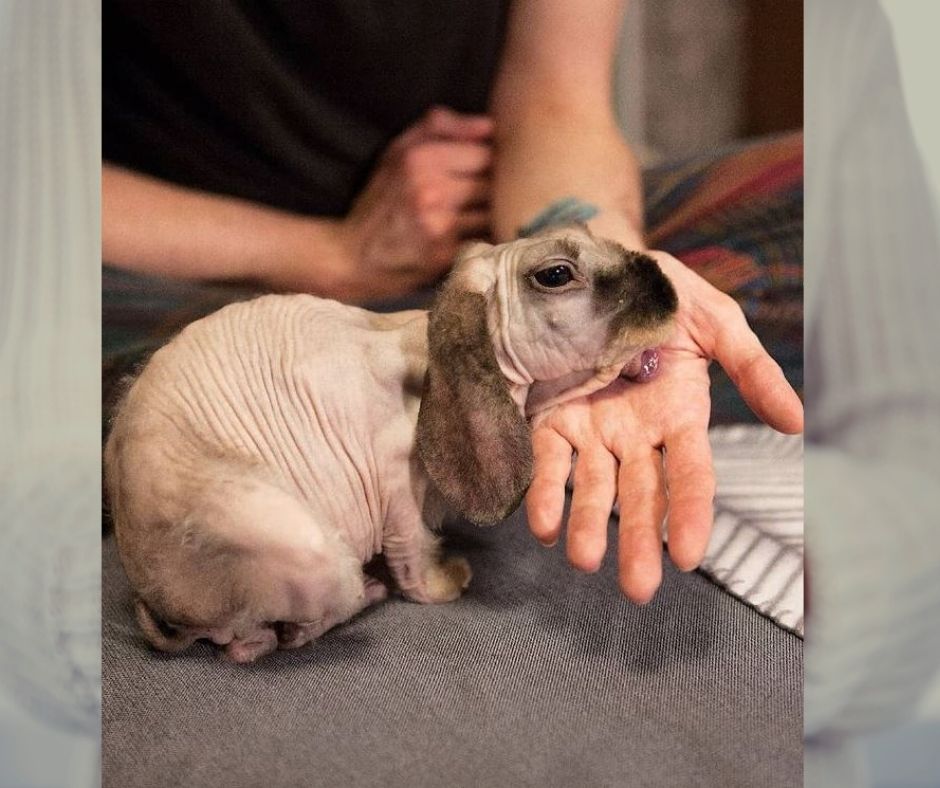
You might think that these long ears of hairless rabbits are for the sense of hearing only, but surprisingly there is one more function.
Hairless rabbit ears have two functions. Of course, the first one is to help these rabbits observe their environment and hear any predators close to them that can cause harm.
They can detect sounds even from a distance of up to 3km. The ears rotate for about 270 degrees to help find the source of sounds. It can revolve independently to check different noises coming from their environment.
The second function is to assist in thermoregulation. The hairless rabbit ear has an extensive network of blood vessels that provides a large surface area for heat exchange. When the rabbit feels hot, their vessels swell, and when they feel cold, they will contract.
Hairless Rabbit Foot
In some beliefs, the rabbit foot brings luck. They say that whoever has a rabbit foot can lead a charmed life. In ancient times, a tribe worshiped the animals and carried parts of them for luck, especially the foot. It was a phallic symbol.
It was not only for fortune, but it also works in infertility and a fruitful harvest. A Celtic tribe once said that rabbits spend time underground, and they communicate with gods and spirits. So, they concluded that a rabbit foot is lucky and powerful.
It does not matter if what kind of rabbit species you have, be it hairless or not. Their foot is an absolute charm for some. Generations after generations carried this belief, and now in modern culture. During the 16th century, they also believed that a rabbit foot prevents you from possible troubles that might occur.
Hairless Rabbit Tail
So, what makes a rabbit iconic aside from its two large ears? It is probably their tails. When you see a hairless rabbit, that means their tails have no present hair.
Unfortunately, hairless rabbits have no cotton and a fluffy tail recognized by many and extremely eye-catchy. However, these precious hairless rabbit tails are functional like normal ones.
The hairless rabbit tail is called a scut tail. It is functional for other rabbits as it let them escape predators in the wild. How is it possible? They have a place underside. When the rabbit runs, predators will be distracted. The tail also serves as a warning if the other rabbit is in danger.
Hairless rabbits are most likely to show their emotions and behavior in captivity. If you see your rabbit wagging its tail, your pet might be irritated. If chasing the tail, it can be an indication of boredom or interest in mating. You have to take note that hairless rabbits do not want their tails to be touched.
Diet Of Hairless Rabbits
When choosing the right food for your hairless rabbit diet, be particular in the nutritional content. Since your rabbit needs special treatment, it deserves food that helps it grow its soft furs again. Hay, fresh vegetables, and pellets are the essential foods for your hairless rabbit.
Hay plays a vital role in giving abundant nutrients to your rabbit. High-quality grass hay like orchards and brome are typically served in bulk quantity. It contains high fiber good for a hairless rabbit’s healthy digestive tract.
Leafy green vegetables such as mustard greens, carrot tops, cilantro, romaine lettuce, watercress, beet greens, broccoli greens, and kohlrabi can be a supplemented diet also. They can eat as many as they can throughout the day.
Limit feeding carrots to your hairless rabbits as it is very high in carbohydrates that can cause bacterial flora. They prefer small portions of different veggies over a large amount of one food.
Do not forget that rabbits need to stay hydrated. It is required to have an unlimited supply of freshwater and changed it daily for quality assurance. You may also know if tomatoes are good for your rabbits, just check out our other articles.
Foods To Avoid
We all want what is best for our rabbits, especially when they are in the process of healing. Just because they are hairless, that does not mean that their value as a lovely companion decrease.
So, if you have one, you should know what food should they avoid for continuous development. Always be careful in choosing their meals because foods can have an impact on their current condition.
Avoid any foods that contain high carbohydrates, especially grains. Since junk foods are not healthy for humans, they are not also for rabbits. These chips, cookies, and candies are high in sugar with artificial ingredients. It can cause the growth of bacteria in their gut that can destroy their digestive system.
Another food making it to the list of inappropriate foods is meat, corn, and eggs. These foods are hard to digest by hairless rabbits. Dairy products, peas, and nuts can cause a toxic overgrowth of harmful intestinal bacteria. They contain high sugar that may cause teeth problems.
Light-colored lettuce like iceberg contains high levels of lactucarium that can cause runny stools. It does not produce nutrients to sustain a healthy lifestyle for your hairless rabbit. Avocados are poisonous too for these rabbits. Their skin, seeds, and leaves are the most toxic part of it.
Are They Good Pets?
Everyone is curious about domesticated rabbits. Rabbits are naturally affectionate and social pets. Although they are hairless, this condition is still curable.
Being a hairless rabbit does not affect its overall functions though sometimes hairless rabbits can give you an attitude. But if you spend time socializing with them and learning their basic gestures, you can expect them to be more active because they are getting used to your presence.
These rabbits can do well with groups because they are experts in socializing. Their playful behavior makes you want to adopt another rabbit joining him the next day. Another advantage of having a rabbit is they give effortless entertainment.
They are fun to watch whenever they exercise, and they will do it regularly. By providing proper care, you can establish a good relationship between you and your hairless rabbit.
Famous Hairless Rabbits On Social Media
Have you heard about the hairless bunny rescued from euthanasia? He is Mr. Bigglesworth, the Instagram star.
A resident from Victoria, Australia named Cassandra Hall saw a local breeder of rabbits on Facebook. She saw a photo of a hairless rabbit. Under the picture was a caption saying Hairless, not for sale. Although she already had her rabbit, she never hesitated to message the breeder as she requests if they can send more photos of the hairless rabbit. Just like us, she never expected to see such a rabbit.
To get the hairless rabbit, she had to put down the rabbit she had before and named it Mr. Bigglesworth. At first, they were worried about the rabbit’s condition because they are not sure if he is healthy. Cassandra took photos of the rabbit, and she posted them on her Instagram account, hoping that someone may know Mr. Bigglesworth’s condition.
A week later, the media began to publish her story, and rabbit owners from different countries tried to reach out to her to discuss their own experience in having a rabbit with the same condition.
Mr. Bigglesworth’s parents have both ff gene or hairless gene. It is why they produce an almost looking bald baby rabbit. This case brings confusion because some grew healthy fur all over their bodies, some grew patchy hair, and others did not live past four weeks of age.
More and more people adore him for his endearing qualities. People begin to embrace his physical appearance and making hairless rabbits an acceptable appearance of a rabbit. Mr. Bigglesworth’s story is still ongoing on social media as Cassandra still posts photos of his rabbit for his loyal followers.
Final Thoughts
Hairless rabbits are not for everyone. If you are a very busy person with lots of responsibilities, then adopting a rabbit is not advisable. They are high-maintenance pets. Shelters need daily cleaning, the food and water should always be fresh and serves daily, and they should often see the vet for treatment.
If you think that hairless rabbits are low-class rabbits because of their condition, you look at them from the wrong perspective. They deserve all the best in this world like other pets living their best life with their owner.
These hairless rabbits are no exception to other rabbits. Their jolly personality is what makes them fun to keep. They can be intelligent and disciplined through proper training, and they know what no means.
They only deserve to be in the owner where they can find peace and comfort. They may be a little naughty sometimes, but their positive vibes sum it all, keeping the whole family entertained throughout the day.
If you love our pet content, we invite you to follow us on our social media outlets for more updates!
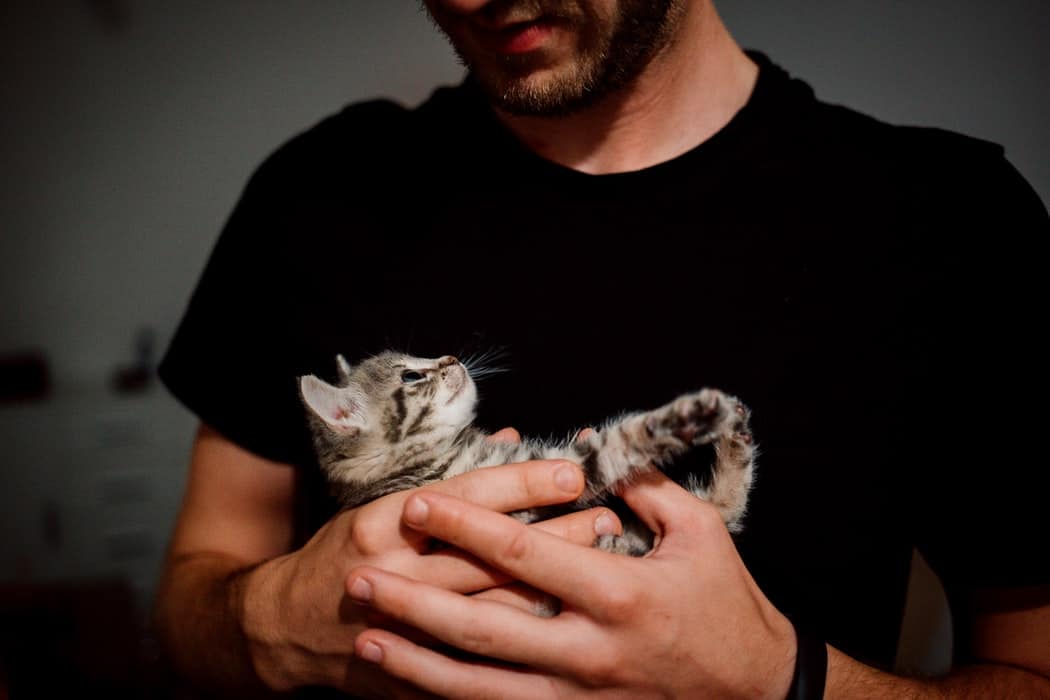
Hezekiah is a pet lover since birth, according to his parents. He started writing for the Pets Checklist in 2020. He is fond of playing with and taking pictures of different friendly animals around his neighborhood. He loves to read and write articles about pets, science, and music.

